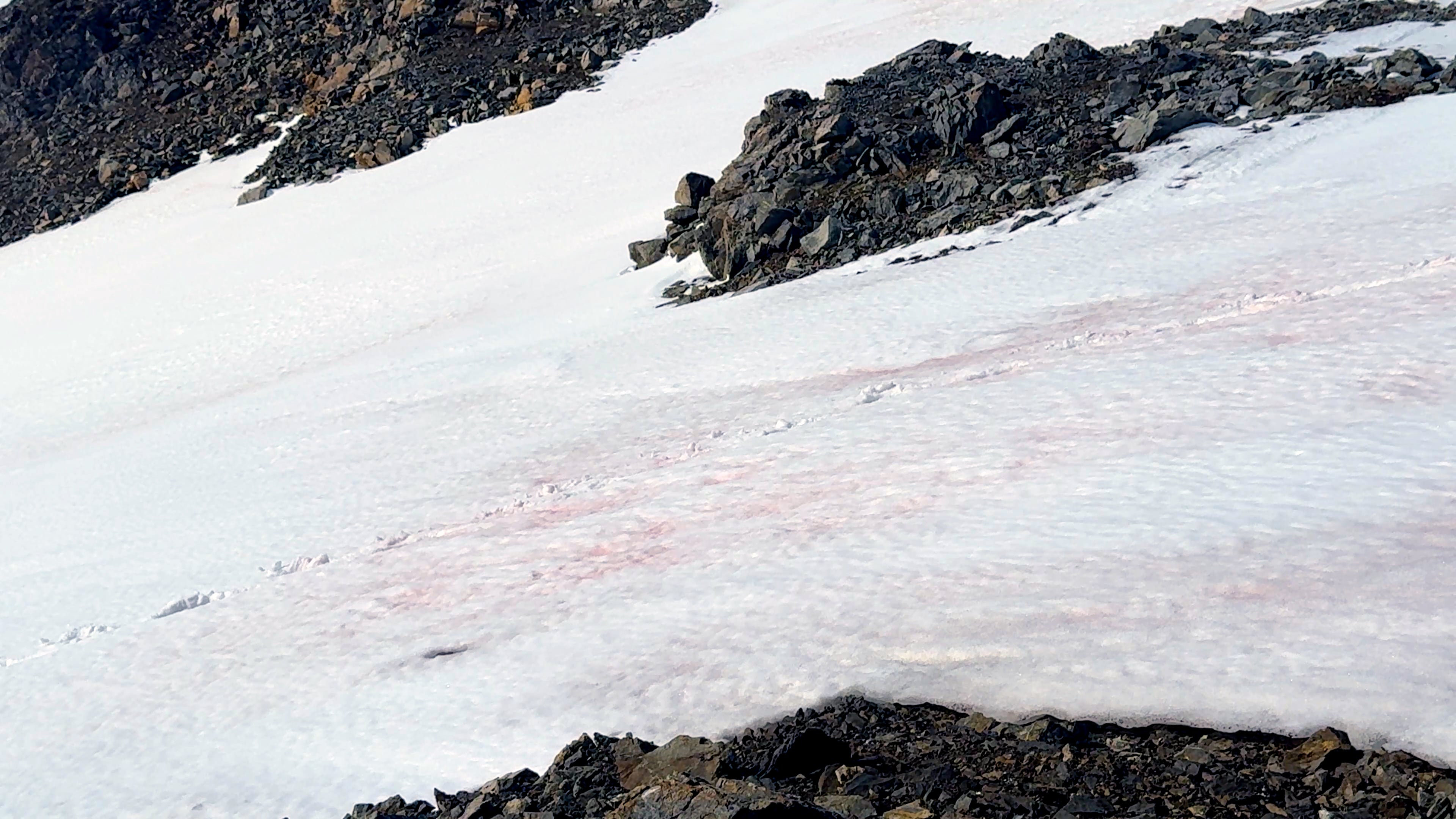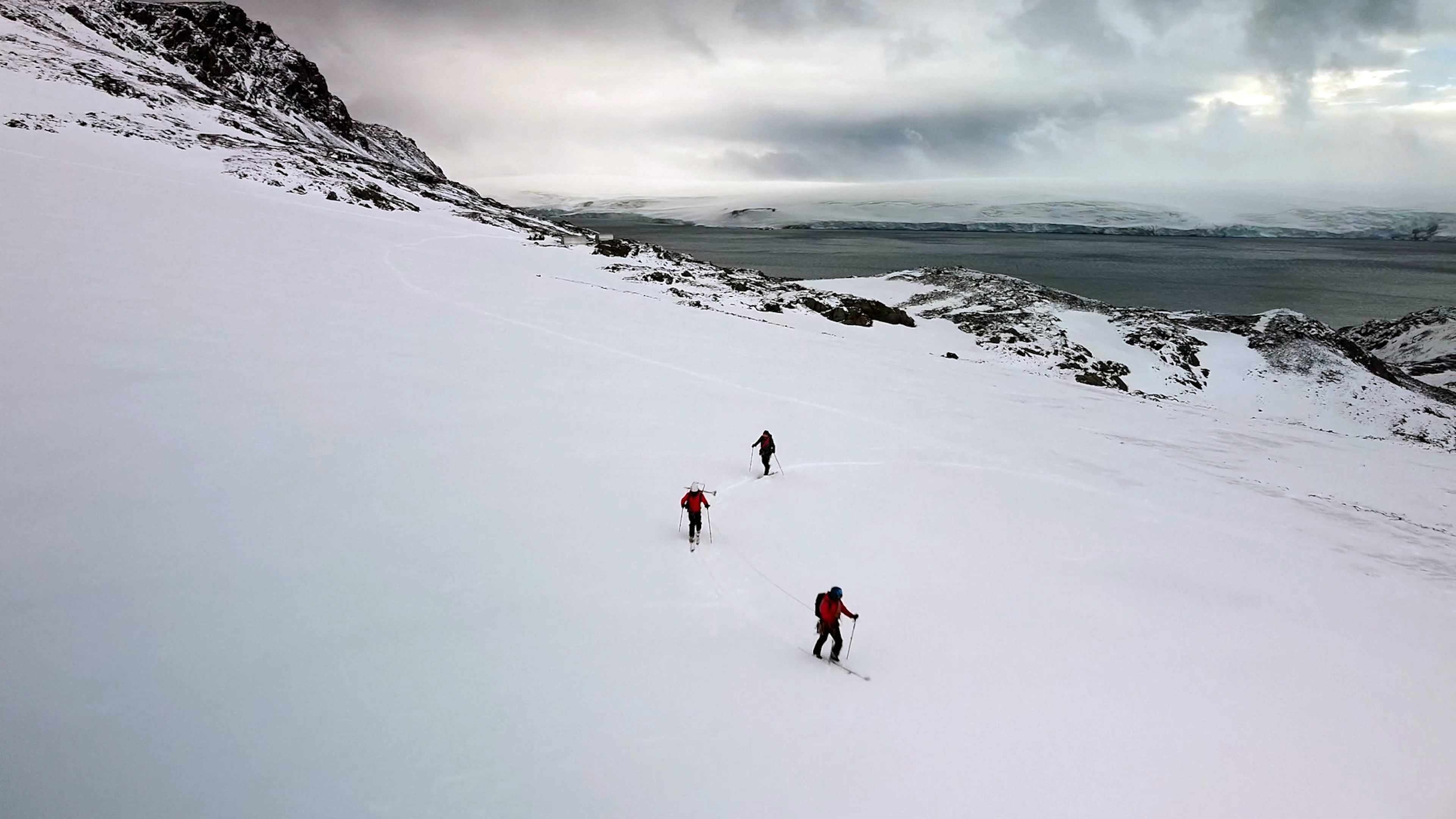Pink snow tints the edges of Antarctica
Microscopic red algae, responsible for a phenomenon also known as watermelon snow or blood snow, are proliferating due to global warming and in turn accelerating it
In Antarctica, there is a small peak rising to 275 meters (900 feet) and named Mount Reina Sofia, after the queen emerita of Spain. On this sunny February morning, its white slopes seem as if a massacre has taken place here. “That’s the pink snow!” exclaims the biologist José Ignacio García, making himself heard amid the cries of Antarctic terns, territorial birds that attack the intruders. Also known as watermelon snow or blood snow, this phenomenon is striking, beautiful even, yet alarming: microalgae, favored by climate change, are proliferating on the snow and turning it red. The immaculate white of Antarctica reflects almost all of the sunlight and returns it to space, but the growing pink surface absorbs more heat, accelerating melting. Warming generates more pink snow. And pink snow generates more warming.






